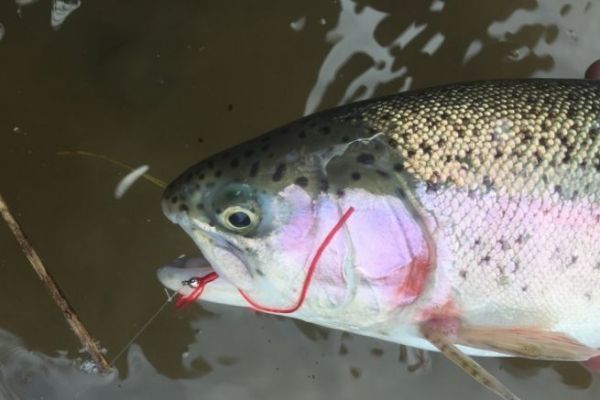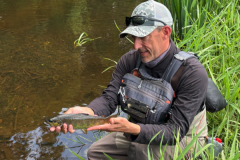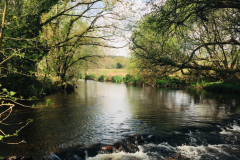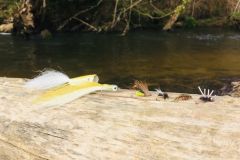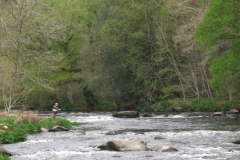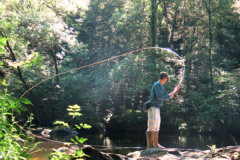What is a "worm"?
Worms" or "worm apps" are worm imitations with long legs that emit numerous vibrations. Not to be confused with the squirmy worms sometimes used in rivers, which are thicker and softer.
They come in many colors, and the fly tyer can vary his imitations in color, length and number of legs. These flies can be tied with or without a bead.
They are assembled with materials known by various names: lure fil, life flex or super floss.
What does it look like in action?
These flies can be used with a variety of lines, from floating to sinking. As always, you'll need to adapt to the layer of water in which the trout are feeding.
This type of fishing is similar to streamer or retrieve fishing. The idea is to disturb the fish with these flies, which emit lots of vibrations and wriggle in the water.
The animations can be very varied, and you'll have to try several retrieves throughout the day to see what makes the fish react the most. Stop and go, continuous animation, long pauses, rolly polly...
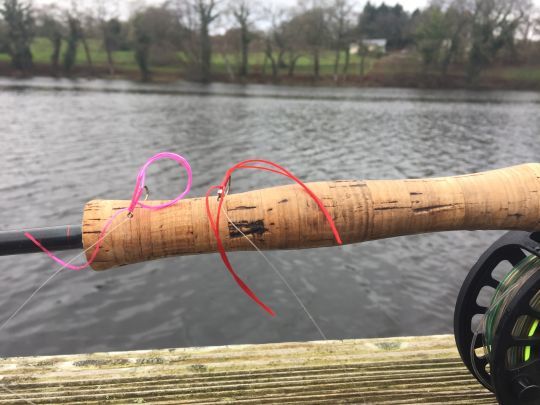
Assemblies and animations
As mentioned above, the first step is to choose the right line density, which will depend on trout activity. It's best to start with a light line and work your way down through the water.
Once you've identified this "stage", you can start by tying a single fly on a long tippet, to be adapted according to the color of the water and your casting ability. With a single fly, it's a good idea to have a leader long enough to be discreet, especially when the water is clear. It can be between 3 and 5 meters long.
Personally, I often start with fast to very fast animations, i.e. retrieving by fast strips or directly in rolly polly which will make the fly cross very quickly over different stations. This often makes fresh fish react, or trout that have never seen this type of fly before.
After catching a few fish, or if you don't get any results, you should then try other slower animations which will allow the fly to sink a little, but also perhaps arouse more interest by producing small strips or tricks, pauses, etc ...
If you're still not getting any hits, you need to ask yourself the right questions and change a few things in your strategy. Silk density, color, set-up, tip size, and even vary your animations.
You can also rig two worms. One on a tippet, which I often mount weighted, with a ball, and another on a gallows 1.5 to 2 metres above the tippet fly, with two distinct colors.
It is also possible to use a streamer on a tippet and a worm on a stem, or a worm on a tippet and another fly on a stem (streamer, montana, chiro...). The options are numerous.
For the rest, you also need to find the right silk density, animations, with or without laying, exactly as you would for single-fly tying.
The advantage of having two different worms or flies is that you can find the water layer and color more quickly.
Some days this technique is very effective, others much less so. It also depends on the reservoir itself, the color and temperature of the water, and whether or not the technique is used frequently.
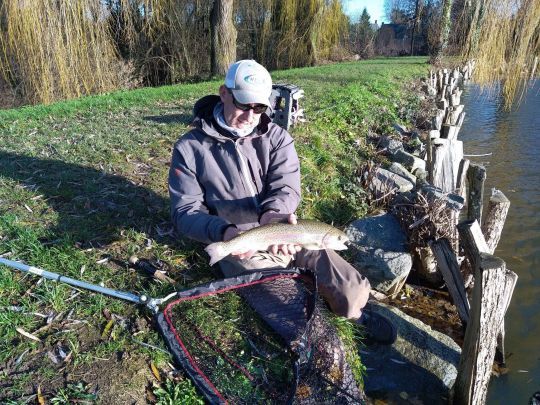
Diagram of possible assemblies
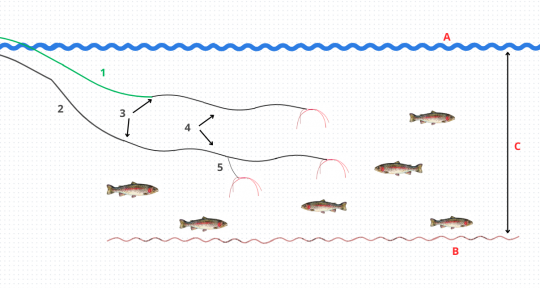
1- Intermediate silk
2- S3 plunging silk
3- Lead silk connection
4- Fluorocarbon leader. Diameter to be adapted. Often between 16 and 20°
5- stem
A- Water surface
B- Background
C- Depth

My favorite colors
Pink, red, black, olive, but many colors work.
More complementary flies to add to the tank fly fisherman's panoply. A technique to be tried from time to time, especially on days when fishing is difficult.
